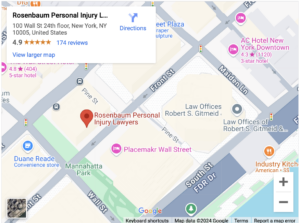Teaching Teen Drivers to Put The Cell Phone Down
A teenage son or daughter getting a driver’s license can be a frightening prospect for many parents. Everyone knows that driving can be a dangerous activity – particularly for teens, since they are new to driving. Parents should encourage teen drivers to avoid distractions in the car.
Distracted driving increases the risk of a crash by a shocking 2,300 percent, according to University of Kansas statistics. Cellphones are the biggest distraction culprit for teen drivers. Approximately one-third of teens send 100 texts a day, according to an AT&T survey of teen drivers. One big way parents can help teens become safe drivers is by making it clear that driving and cellphones do not mix.
Be an example, set rules
Children learn a lot from parents, and that does not end when they become teenagers. Parents can teach teenagers to be safe by not texting or talking on cellphones when driving themselves. It will also help parents become safer drivers.
In addition to setting a good example, parents will also want to set down some rules for teenagers. Parents might insist that teens’ cellphones be kept in the trunk or backseat where they cannot be accessed. If parents do not want teenagers to use cellphones while driving, parents will need to stick to the rules, too. Parents need to ensure that breaking the rules results in a punishment.
If parents want to be able to check up on teens to make sure they are following the rules, there are some cellphone applications that can monitor teens’ cellphone use. Some applications can lock cellphone use while teens are driving or allow parents access to teens’ cellphone activity. If teens know that parents will find out if they break the rules, using the cellphone while driving will be less likely.
Point out dangers
Teens might have some misconceptions about cellphones and driving. Some teens boast that because they do not have to look at their phone while they write a text, it is safe. Many people think it is okay to send or read a text at a red light or in stop-and-go traffic. However, parents can remind teens of the laws about texting and driving and the dangers that could result.
According to the National Highway Traffic Safety Administration, 6,000 people were killed during 2008 due to distracted driving. But these statistics won’t necessarily have a sobering effect on teens. Watching a video that shows the aftermath of a texting and driving crash might help the message to hit home. Parents can discuss with teenagers how parents would feel if teens died in such a crash. Parents might also ask them to consider if a text is worth their death or the death of another.
If you or a family member has been a victim of distracted driver, you may need the help of an attorney to get the assistance you need. An attorney who specializes in cases such as yours has the experience to help you recover compensation for the losses you have suffered.
Contact the New York City Car Accident Law Firm of Rosenbaum Personal Injury Lawyers for Help Today
If you’ve been injured in an accident in Manhattan, NY, and need legal help, contact our car accident lawyers at Rosenbaum Personal Injury Lawyers to schedule a free consultation. We also serve in Brooklyn and the Bronx.
Rosenbaum Personal Injury Lawyers – New York City Office
100 Wall St, 24th Floor
New York, NY 10005
(212) 514-5007
Our firm is located near you. We have an office in NYC
Find us with our GeoCoordinates: 40.7051415,-74.0067386
Rosenbaum Personal Injury Lawyers – Bronx Office
1578 Williamsbridge Rd suite 3b
Bronx, NY 10461
(929) 447-2347
Our firm is located near you. We have an office in the Bronx
Find us with our GeoCoordinates: 40.8468944,-73.8483118
Rosenbaum Personal Injury Lawyers – Brooklyn Office
32 Court St #704
Brooklyn, NY 11201
(718) 550-3601
Our firm is located near you. We have an office in Brooklyn
Find us with our GeoCoordinates: 40.692948,-73.991038



